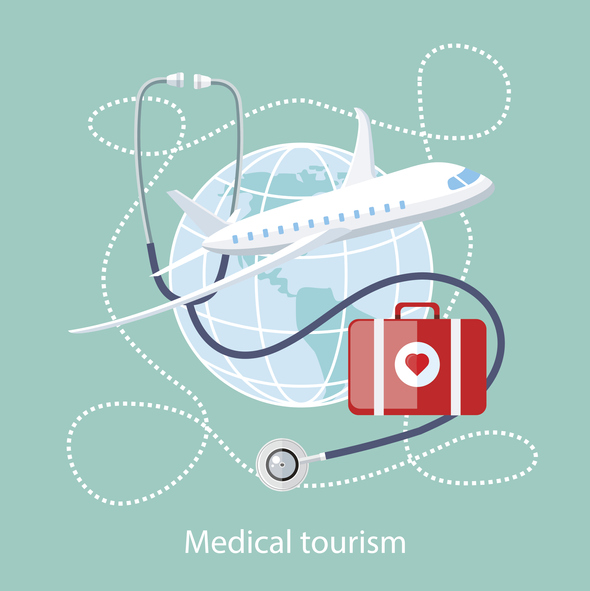All industries need translators and interpreters who are trained in different languages. Although some items, symbols, and/or actions may be universally understood, you still need to convey subtle meanings and instructions across cultures. It is especially important to overcome language barriers in healthcare. That is why the need for medical translation and interpretation is so critical.
Translation and interpretation activities in the health domain are numerous. They can range from simultaneous or consecutive interpretation, translation of medical files, correspondence between doctors and patients, and much more. This article will provide a complete overview of language translation and interpretation in healthcare. We will attempt to answer the questions:
- Who does it?
- How does it work?
- How much does it cost?
And we will provide some predictions for the future.
Medical translation vs medical interpretation
In the language services industry, we differentiate between two concepts related to transferring the meaning from one language to another: interpreting and translation.
- Interpreting refers to the act of real-time, in-person transferring of communication from one language to another.
- Translation refers to written documents and is usually not carried out in real-time.
These activities are distinct and require different training and skillsets. However, it is common to use the term medical translation and medical interpretation interchangeably. I will try to point out the distinctions as we explore the profession in this article.
Why medical translation and interpretation are so important
Medical translation and interpretation together comprise one of the most sensitive fields within the industry of translation. Unlike some other forms of translation and interpretation, there is zero-tolerance for mistakes in healthcare.
This is because incorrect translation might harm someone’s health or well-being. It could lead to interventions, like surgery or prescription of powerful medications that are associated with a risk of serious complications. Thus, it is clearly an activity that has to be carried out by highly proficient people who exercise a great deal of concern in order to ensure the quality of their work.
-
Worldwide patterns of migration drive demand
The medical translation field has become even more critical with the rise of migration. Large numbers of people move from one country to another without speaking the language. When they require health care, particularly in emergencies, they can be in trouble without interpreters.
For many people who are outside the industry, it may seem surprising that there is such a high demand for language interpretation in medical services. However, statistics show that it’s anything but surprising. For example, in the US, more than 45 million people don’t speak English as their primary language. And, an additional 21 million said that they don’t speak English “very well”.
-
The impact of international tourism
Along similar lines, until the onset of the COVID-19 pandemic, international tourism was increasing every year. Again, this can lead to people becoming stranded in emergency rooms where they cannot speak the language. Again, this is where medical interpreters come in.
-
Medical tourism and interpretation
Another opportunity for increased demand in healthcare interpreting is medical tourism. This is an industry that has been on the rise with the expansion of international flight connections and globalization in general.
Medical tourism occurs when people from countries, like the United States with a high costs of healthcare choose to get services in countries where healthcare is high quality, but much cheaper. They often combine it with a vacation.
It is most often done in the fields of cosmetic surgery and dentistry. However, you can now find overseas opportunities to receive a broad range of services, including joint replacements, organ transplantation, and cardiovascular surgery, amongst others.
Naturally, medical tourism’s only issue is the language and cultural gap. This is why many organizations who are dealing with these types of medical services often have language interpreters on call.

According to experts, both medical tourism and telemedicine will increase the demand for interpreting in healthcare services in the near future.
What is language translation in healthcare settings?
In general, medical translation (encompassing translation and interpretation) is defined as any process of translation that serves healthcare professionals to provide the necessary treatment for patients who speak (or read) another language.
As you are aware, it’s incredibly important that medical professionals are able to communicate with their patients effectively. As I have mentioned that’s not the case, the entire care and treatment process is endangered. Medical interpreting and translation, therefore, primarily deal with these tasks:
- simultaneous interpreting of doctor-patient communication
- translation, including but not limited to, of any of the following documents:
-
-
- doctor-patient written correspondence
- patient’s medical history in another language
- lab test results, findings, and so forth.
-
When you need any type of medical translation, you should contact experts who are experienced in that particular field. Don’t contact just any translation agency or company – it’s important that the company you’re working with has had previous experience with these types of documents because they have special terminology.
You need to specify if you need medical interpreting or medical translation
When you’re looking for language services, you need to specify whether you’re looking for interpreting or translation. If you want someone to be in the hospital or at a doctor’s appointment with your family member, look for interpreting services.
If you want to get a medical document, lab test results, or any other written document translated to another language, you’re looking for a translation.
The benefits of interpreting include an opportunity to have a private, intimate conversation with a doctor and to ask questions as they pop up into your mind. It’s also much faster than translation because it has to be done in real-time. The drawback is that there is more room for error as the interpreter has to react quickly and sometimes under pressure.
Translation, on the other hand, is done at a much slower pace. As a result, the translator has the opportunity to step back and take the time needed to decrease the chances of error. However, this may not be applicable in a medical setting because information usually has to be processed as soon as possible.
Put your self in the patient’s shoes when thinking about medical translation and interpretation
Just imagine a regular visit to the doctor and being unable to explain what the issue is. Simply put, healthcare heavily relies on the patient’s subjective and objective description of what they are experiencing. Further, care and treatment depend on the fact that patients understand, trust, and listen to doctors’ instructions. In fact, non-native English speakers in the US often report that they are unsatisfied with the medical care they receive and they risk medical errors more than native speakers.
Unfortunately, the vast majority of healthcare organizations do not provide sufficient interpreting services. Usually, people who help non-native speakers are found “randomly.” They are family members or friends who speak both languages, not trained interpreters.
There are many problems with involving family members in interpretation including violating the patient’s privacy, failure to fully translate what the patient said because of embarrassment on the part of the patient or the family member. Sometimes there is a failure to fully understand the question or the answer.
Unfortunately, in many healthcare settings, patients have to rely on family members or secure healthcare interpreting services on their own. Sometimes the healthcare organization will help find the interpreter but the patient will be charged for the extra expense. Sometimes, the patient has to find a language professional on their own and pay out of pocket.
Telephonic services for medical interpretation
Another increasingly used language service is hiring telephone interpreters in a medical setting. In recent years, many big translation and interpreting companies have started expanding their offer portfolio to cover this service as well.
If you’re considering hiring a telephone interpreter in a healthcare setting, make sure they are certified medical interpreters. The issue with tele-interpreters is that many people and organizations around the world offer this service with varying quality. Unfortunately, it may be hard to differentiate between expert interpreters and amateurs.
If you’re sure you have access and cooperation set up with a certified medical telephone interpreter, that’s a good solution. If you’re not sure, it’s better to opt for some other interpreting options.
The price of medical interpretation and translation
The greatest issue with language interpretation in healthcare is that organizations don’t contract with regular interpreters because of the financial burden these services may impose.
Among all translation niches and fields, medical is one of the most expensive ones. Also, simultaneous interpretation is notably more expensive than a written translation.
Affordable services that can help you with medical translations are widely available. You can search the internet for medical interpretation and translation services to see what kinds of prices are being charged.
You will find that the pricing may differ wildly from one organization to the next. For example, some healthcare clinics offer free interpreting services for patients who don’t speak the language. Others will charge it as an additional service along with your medical bill.
Remember, the benefits far outweigh the costs when you decide to hire a professional medical interpreter compared to a non-trained professional.
How to carry out professional and accurate language interpreting in healthcare?
If you’re a healthcare professional who is communicating with a non-native speaker for the first time, a patient who doesn’t speak a foreign language or an intermediary, here are some of the basic tips to keep in mind during the interpreting process:
-
Introduction
It sounds obvious, but it would surprise you how many times people forget about this. Present all the people who are taking part in the conversation: patient, patient’s partner, parents, and so forth.
-
Speak slowly
Keep in mind that someone will be translating everything you say. Slow down the tempo and speak clearly. This is especially important if you are a naturally fast speaker.
-
Speak to each other
When an interpreter is present, many people feel like they should speak to them instead of the doctor/patient. You should talk directly to the doctor/patient instead.
-
Take breaks more often
Don’t combine dozens of sentences and questions and wait for the interpreter to make sense of all that. Take frequent breaks from speaking to give the interpreter enough time to present what you just said.
-
Set aside more time
When you have an appointment with an interpreter, it will last at least twice as much as a “regular” appointment. Make sure you take that into consideration when you schedule these types of appointments.
For many people, this is a new situation that takes some getting used to. Namely, a visit to the doctor is, for most people, a private and intimate process. It involves communication about your personal issues with a person you trust.
When an interpreter enters this equation, the social dynamics of the doctor-patient conversation can become a little awkward. Nevertheless, it’s a prerequisite for good understanding and to ensure that a patient receives proper care.
Related Content:
Listen to Your Patients – They’re Telling You the Diagnosis!
5 Things Not to Do When Delivering Bad News to Patients
Conclusion
Medical interpretation is sensitive. It is best when it is carried out by professionals. If a healthcare organization doesn’t have its own interpreter (which it probably doesn’t), you can hire someone to help you. Make sure you hire someone with experience in healthcare particularly because mistakes really can be costly.
Avoid getting interpreting services from amateurs and non-trained persons if at all possible. As you probably know, even the tiniest bit of information that’s exchanged in doctor-patient communication is important. Omitting something or adding a fact that’s not there can seriously harm care and treatment. To avoid this, I recommend you work with professionals.
Mark Blackwood
Website:
https://thewordpoint.com/
Mark Blackwood is a professional translator and localization expert. He is an editor at TheWordPoint, a translation and localization service. Mark translates for various businesses, academic institutions, and medical practices/facilities around the world.
Mark earned his Master’s Degree in the German language at the University of New York, Department of Linguistics. He is a member of the Linguistic Society of America.
He’s passionate about traveling, European literature, sports, and marketing. Mark is currently traveling around Asia while working as a freelance translator remotely.










Comment will held for moderation